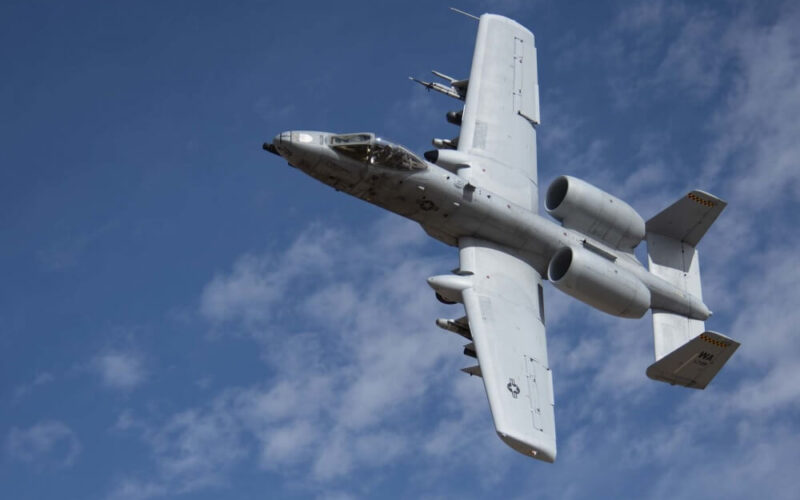A U.S. Air Force A-10C Thunderbolt II accidentally fired an M156 air-to-ground rocket outside Tucson, Arizona. No injuries were reported.
The aircraft belonged to the 354th Fighter Squadron based in Davis-Monthan Air Force Base, Arizona. It was conducting a training mission on September 5, 2019, in a live-fire weapons range when the incident occurred. The live M-156 rocket landed in an uninhabited land under the Jackal Military Operations Area. The area is not designated for munitions release, says the 355th Wing Public Affairs.
The M-156 rocket has a warhead that contains white phosphorus, a highly flammable material. Regulated by several international statutes, it is used by the military to produce smoke to identify targets, but also as an incendiary weapon. Fortunately, the rocket which hit a “desert wash” does not seem to have started any fire.
It is the second time this year that an A-10 is involved in such an incident. On July 1, 2019, an A-10C Thunderbolt II of the 23rd Fighter Group dropped three training bombs after being hit by a bird near Suwannee Springs, Florida. The aircraft was on a training mission near Moody Air Force Base, southern Georgia. No damage or injuries were reported.
New wings, new life
The A-10 Thunderbolt II nicknamed the “Warthog” is a ground attack aircraft made by Fairchild Republic Company. It is specialized in close air support of land forces. Sometimes described as a “flying tank”, the A-10 is known for the iconic sound of its GAU-8 Avenger autocannon firing Depleted Uranium anti-armor ammunition. Another distinct characteristic is the titanium “bathtub” protecting the pilot, which allows for the plane to operate even after sustaining heavy damage. Much like the F-22 Raptor, the A-10 is only operated by the US Air Force and has never been exported.
All A-10s were scheduled to be retired by 2022. However, the U.S. President recently announced that this plan could be disrupted. On June 30, 2019, during a visit to Osan Air Base, South Korea, Donald Trump declared “it’s just a very great machine, and we’re looking at ways that maybe we can keep it around a little bit longer,” as reported by the Air Force Times.
The decision was materialized on August 21, 2019, when Boeing announced it had been selected to replace the wings of 112 aircraft, for $999 million. The company had already received a similar contract in 2007, valued at $1.1 billion. In total, 173 new wings were installed on the USAF A-10s, with the last set installed shortly before the new contract was awarded, on August 12, 2019. The new wings will allow the A-10 to fly until the end of the 2030s if its retirement is not decided by then.

